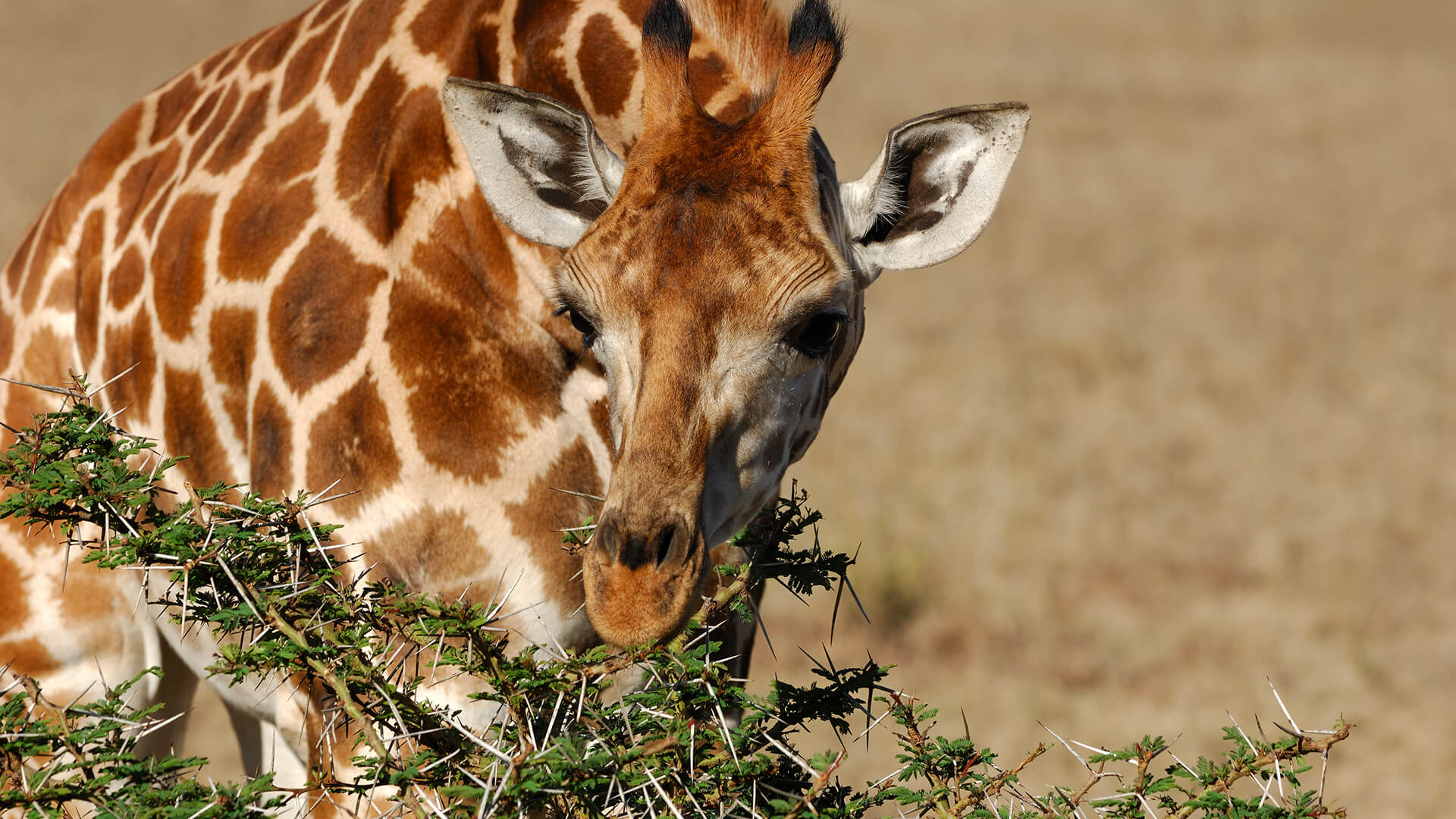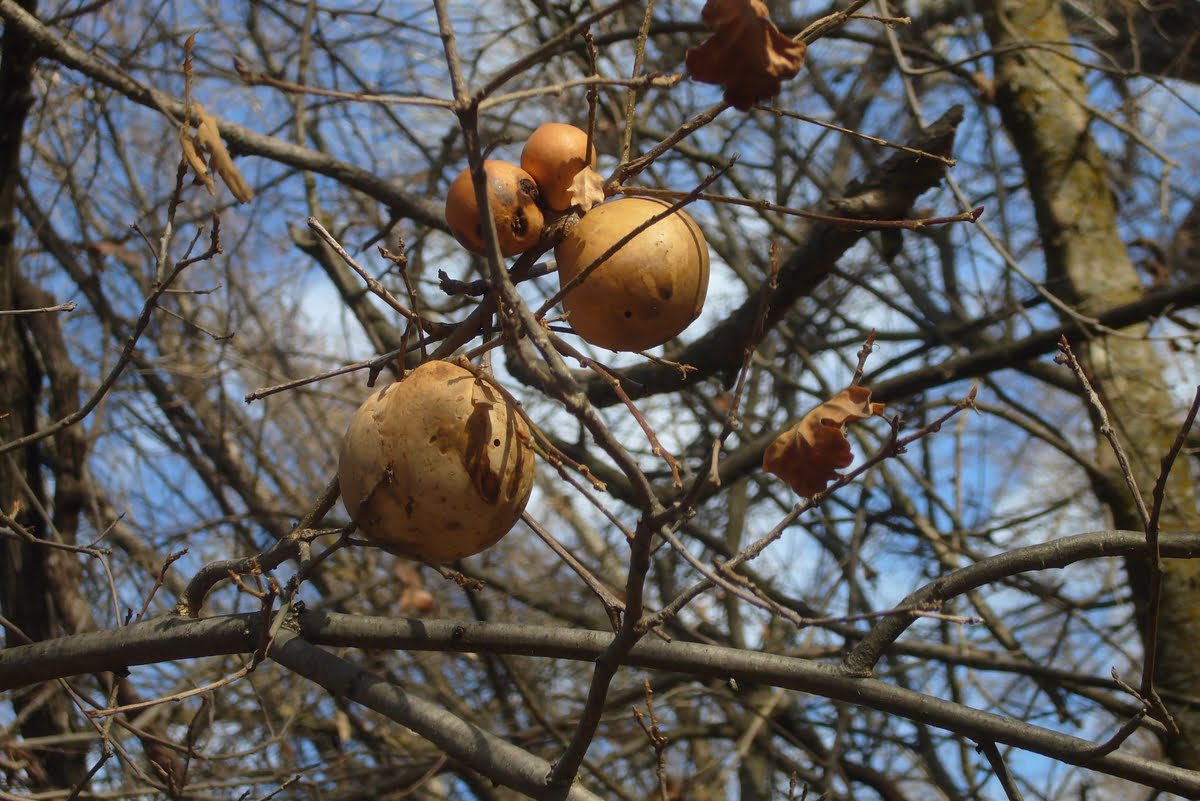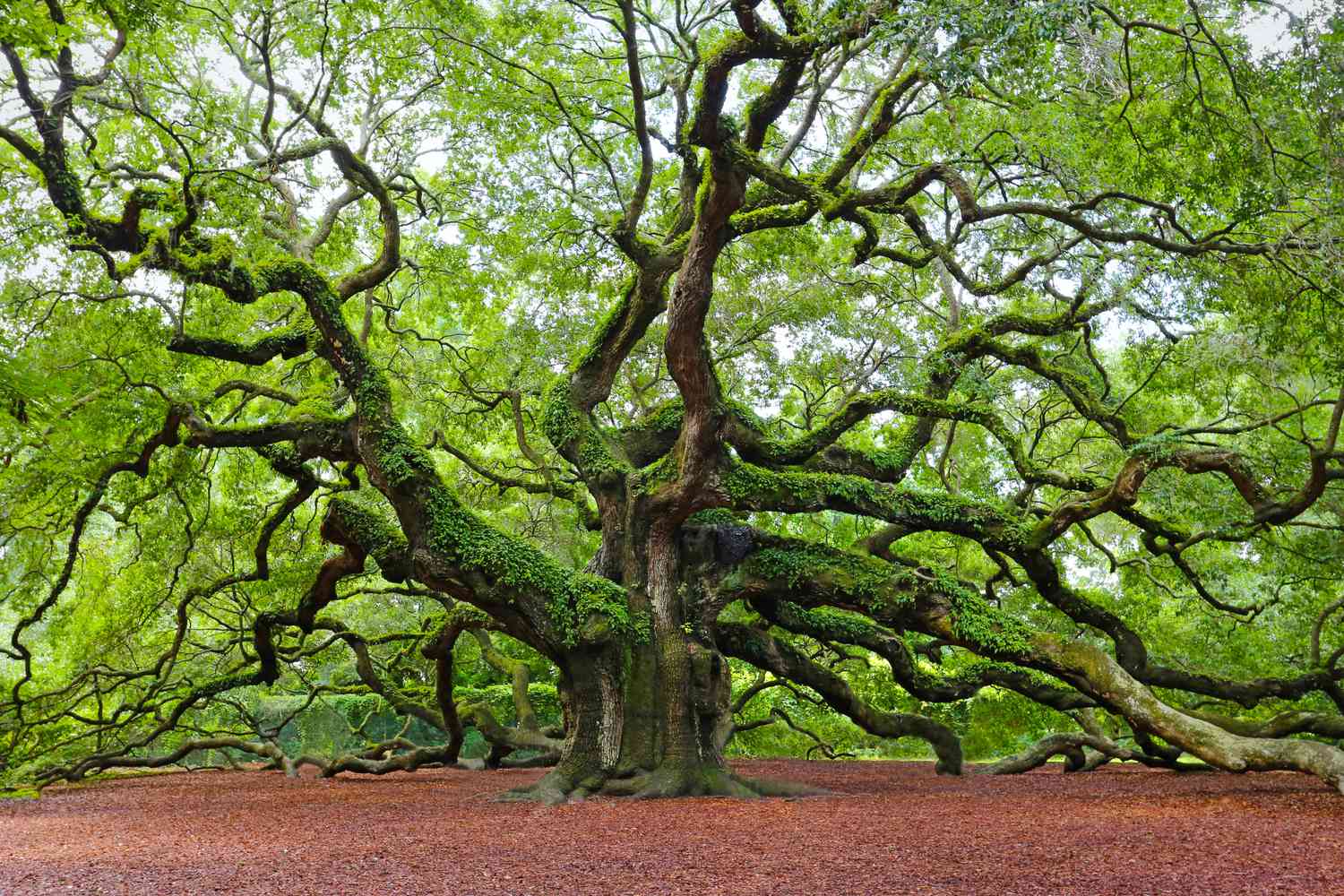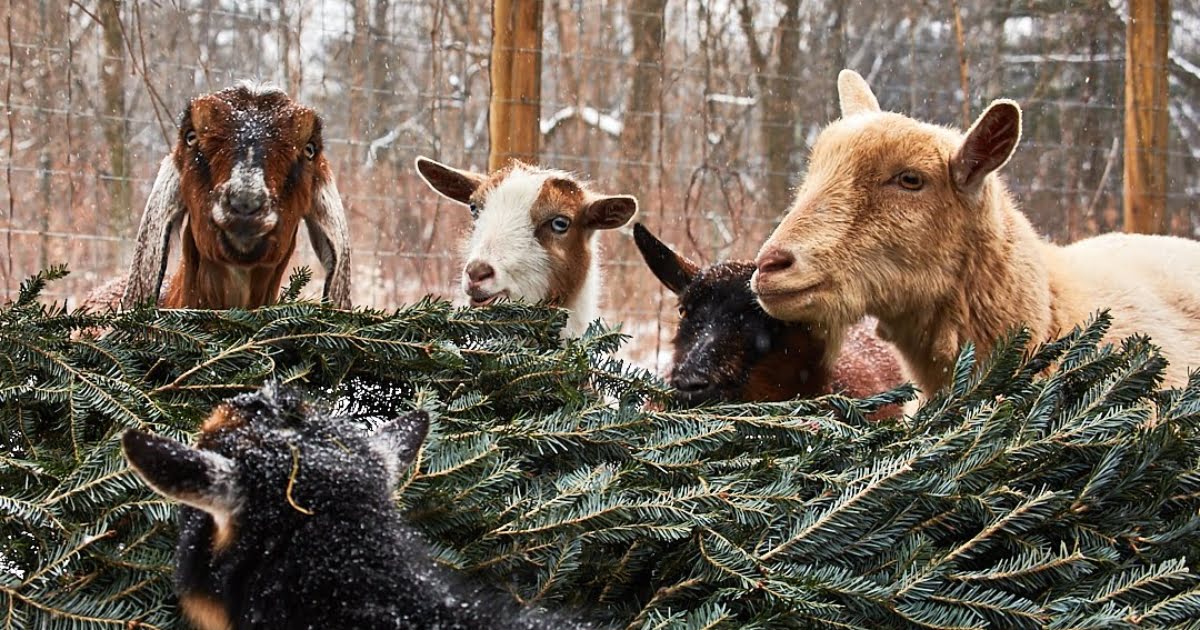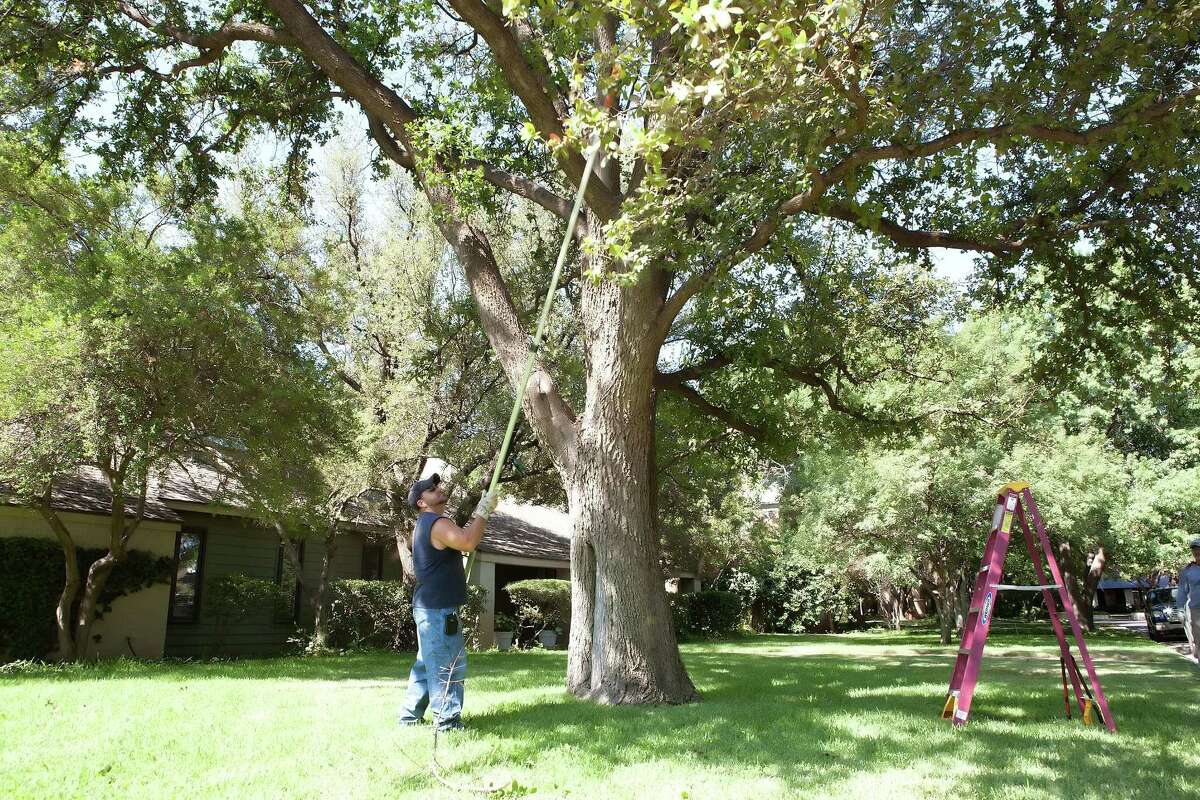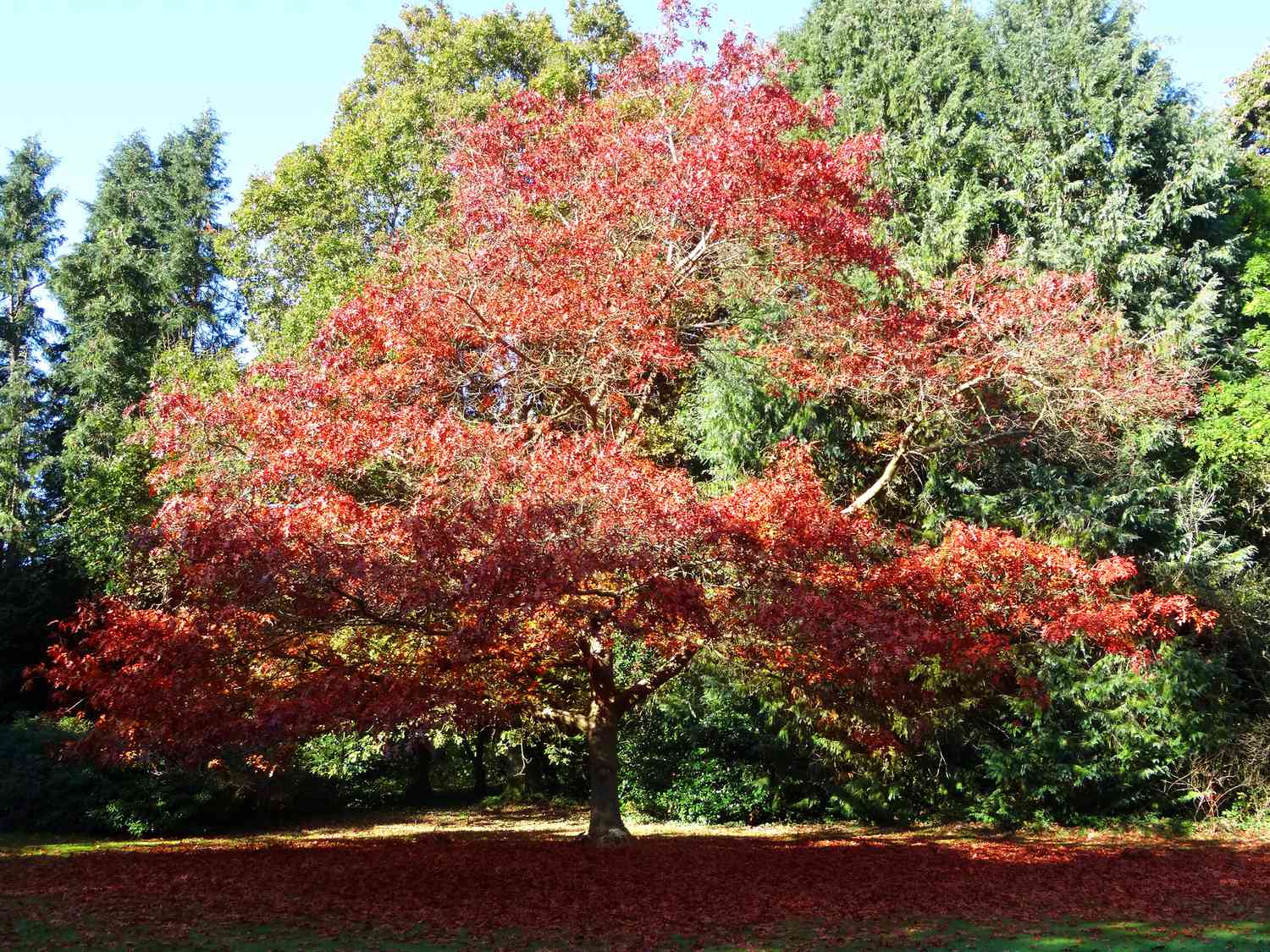Home>Gardening Techniques>Plant Care>What Eats Oak Trees


Plant Care
What Eats Oak Trees
Modified: January 22, 2024
Discover the best plant care tips to ensure your oak trees thrive. Learn what eats oak trees and how to protect them from threats in your garden.
(Many of the links in this article redirect to a specific reviewed product. Your purchase of these products through affiliate links helps to generate commission for Chicagolandgardening.com, at no extra cost. Learn more)
Table of Contents
Introduction
Oak trees are not only majestic and beautiful, but they also play a vital role in our forest ecosystems. With their strong, sturdy trunks and sprawling branches, these trees provide shelter, food, and habitat for a diverse range of organisms. However, even these mighty giants are not immune to the appetites of various creatures that rely on them for sustenance.
In this article, we will explore the fascinating world of oak tree consumers and delve into the intricate web of interactions that exist between these organisms and their beloved oak hosts. From the insects that munch on the leaves to the mammals that devour their acorns, we will uncover the diverse range of herbivores and predators that feast on oak trees.
Furthermore, we will also shed light on the decomposers that play a vital role in the oak tree’s life cycle. These often overlooked organisms, such as fungi and bacteria, are responsible for breaking down fallen oak trees, returning nutrients back to the soil and supporting the growth of new life.
So sit back, relax, and prepare to be amazed by the intricate relationships and the delicate balance that exists between oak trees and the creatures that rely on them. Let’s dive into the captivating world of what eats oak trees.
Oak Trees: A Vital Component of Forest Ecosystems
Oak trees (genus Quercus) are a vital and prominent component of forest ecosystems worldwide. They are renowned for their longevity, with some species capable of living for hundreds of years. These majestic trees provide numerous benefits to their environment and the organisms that inhabit them.
One of the most important roles oak trees play is that of a keystone species. They create a complex and diverse habitat that supports a wide array of plant and animal life. The dense canopies of oak trees provide shade and shelter for countless species, serving as a refuge from predators and extreme weather conditions.
Additionally, oak trees provide a valuable food source for many animals. Their acorns, which are the fruits of the oak tree, are eagerly sought after by a range of organisms. Squirrels and other small mammals rely heavily on acorns as a winter food source, caching them in various locations for later consumption. These animals play a crucial role in dispersing oak tree seeds, as they often forget to retrieve some of their hidden stores, allowing new oak seedlings to sprout and grow.
The leaf litter produced by oak trees has its own ecological significance. As the leaves fall to the ground, they gradually decompose, enriching the soil with essential nutrients. This nutrient cycling process supports the growth and vitality of other plants in the ecosystem, creating a thriving and self-sustaining environment.
Moreover, the architecture of oak trees provides nesting sites for a variety of avian species. Woodpeckers, owls, and other hole-nesting birds take advantage of the cavities found in aging oak trees, using them as safe places to raise their young. These nesting sites also attract other wildlife like bats and small mammals, contributing to the overall biodiversity of the ecosystem.
Overall, oak trees are a cornerstone of forest ecosystems. Their presence not only enhances the visual appeal of the landscape but also supports a rich and complex web of life. From providing shelter and food to facilitating nutrient cycling and boosting biodiversity, oak trees have irreplaceable value in maintaining the health and balance of forest ecosystems.
Herbivores: Consumers of Oak Leaves
When it comes to consuming oak trees, herbivores take center stage. These organisms have evolved to feed on the luscious leaves of oak trees, utilizing them as a primary food source. From insects to larger mammals, a diverse range of herbivores have adapted various feeding strategies to make use of the nutritious foliage.
Insects are some of the most common consumers of oak leaves. Caterpillars, in particular, play a significant role in oak tree herbivory. These voracious larvae feed on the tender leaves, utilizing the nutrients to fuel their growth and development. Some moth and butterfly species have evolved to specialize in feeding on oak trees and have developed specific adaptations to deter predators.
Other herbivorous insects, such as beetles and weevils, also cause damage to oak trees. They chew through the leaves, leaving behind characteristic feeding patterns and damage marks. While these insects may not be as specialized as caterpillars, their cumulative effect on the health of oak trees can be substantial.
Aside from insects, larger herbivores also feed on oak leaves. Deer, for instance, are known to browse on the foliage of young oak trees, as well as nibble on the growing tips of mature trees. These herbivores can have a significant impact on oak forest regeneration as their feeding behavior can limit the growth and survival of oak seedlings.
Smaller mammals, such as rabbits and rodents, are also partial to oak leaves. They often forage on fallen or low-hanging leaves, making use of this readily available food resource. While their individual impact may be small, collectively these small herbivores can contribute to the overall herbivory pressure on oak trees, especially in areas with high population densities.
It’s worth noting that oak trees have developed various defense mechanisms to protect themselves against herbivory. Tannins and other chemical compounds present in the leaves make them unpalatable to some herbivorous insects and larger mammals. Additionally, some oak tree species have evolved to produce leaves with tough, fibrous textures, making them less desirable to feed on.
Herbivory on oak trees is a natural ecological process that helps to maintain a balance between plant and animal populations. As herbivores consume oak leaves, they provide a source of energy for themselves while also shaping the growth and development of the trees. The interaction between herbivores and oak trees is a dynamic and essential aspect of ecosystem functioning.
Insects: A Diverse Group of Oak Tree Consumers
When it comes to consuming oak trees, insects stand out as a diverse and fascinating group of consumers. With their vast numbers and unique adaptations, they have developed various feeding strategies to exploit the resources provided by oak trees.
Caterpillars are perhaps the most well-known insects that feed on oak trees. They have evolved to specialize in consuming oak leaves, utilizing their strong jaws to chew through the foliage. The larvae of many moth and butterfly species can be found munching on the tender leaves, deriving essential nutrients and energy for their growth and development.
Some caterpillars, like those of the family Saturniidae, are known for their voracious appetites. These large silkmoth caterpillars can defoliate entire sections of oak trees as they consume leaf after leaf. However, it’s important to note that oak trees have co-evolved with these insects and can typically recover from such defoliation events.
Beetles and weevils also play a significant role in oak tree herbivory. These insects have specialized mouthparts that allow them to chew through the leaves, leaving distinct feeding patterns behind. Some beetles, like the oak leaf beetle, are particularly notorious for their consumption of oak leaves, causing noticeable damage to the foliage.
In addition to feeding on the leaves, certain insects target other parts of the oak tree. For example, the larvae of oak gall wasps induce the formation of distinctive growths called galls on the leaves or twigs. These galls serve as protective structures for the developing wasp larvae but can also alter the growth and physiology of the oak tree.
Other insects, such as the acorn weevil, focus their attention on the acorns of oak trees. The female weevils lay their eggs within the developing acorns, and upon hatching, the larvae tunnel into the acorn and feed on its contents. This feeding behavior can impact the reproductive success of oak trees, as damaged acorns may fail to germinate or produce healthy seedlings.
However, not all insects that interact with oak trees are herbivores. Some insects, like certain species of ants and bees, rely on oak trees for nesting sites and food resources. These insects may create networks of intricate tunnels within the moist and decaying wood of oak trees or collect pollen and nectar from oak flowers.
The diverse array of insects that consume oak trees highlights the complex and dynamic interactions between organisms within ecosystems. While some insects may cause damage to oak trees, they also play important roles in nutrient cycling, pollination, and serving as a food source for other organisms higher up the food chain. The ever-evolving relationship between oak trees and insects is a testament to the intricate balance of nature.
Mammals: Feeding on Oak Tree Parts
When it comes to consuming oak trees, mammals play a crucial role as consumers, utilizing various parts of the tree as a source of food. From foraging on acorns to browsing on leaves and even utilizing the wood for shelter, these mammals have adapted different feeding strategies to make use of the resources provided by oak trees.
One of the most well-known associations between mammals and oak trees is the consumption of acorns. Many mammals, such as squirrels, deer, and wild boars, rely heavily on acorns as a food source. These mammals have developed specialized adaptations to efficiently extract the nutrient-rich seeds from the acorn, whether by cracking open the hard shell with their teeth or using their hooves to break them apart.
Squirrels, in particular, are renowned for their ability to hoard acorns. These small mammals gather and bury acorns in various locations as a winter food cache. Their remarkable memory allows them to locate these hidden stores, ensuring a steady food supply throughout the colder months. Inevitably, some of these hidden acorns go untouched, providing an opportunity for oak tree regeneration as new seedlings sprout from forgotten caches.
Deer, on the other hand, are known to browse on the foliage of oak trees. They feed on the tender leaves, twigs, and even young bark, especially during times when other food sources may be scarce. While deer browsing can temporarily stunt the growth of young oak trees, it also helps to shape the structure of the forest and expose sunlight to the forest floor, promoting the growth of understory plants.
Other mammals, such as rabbits and rodents, also feed on oak leaves, particularly fallen or low-hanging ones. They make good use of available leaf litter and foliage, contributing to the recycling of nutrients within the ecosystem. These small herbivores can have a cumulative impact on the health of oak trees, especially in areas with high population densities.
Some mammals also utilize oak trees as shelter or nesting sites. Tree cavities, often created by age-related decay or woodpeckers, offer secure nesting locations for various mammals, including raccoons, squirrels, and owls. These cavities provide protection from predators and harsh weather conditions, allowing these mammals to raise their young safely.
It’s important to note that while mammals can play a vital role in oak tree ecology, they may also have challenges to face. In certain regions, overbrowsing by deer populations can exert significant pressure on young oak trees, hindering future regeneration and impacting forest dynamics. Conservation efforts and proper wildlife management strategies are essential to maintaining a healthy balance between mammals and oak trees.
Overall, mammals form an integral part of the intricate web of life surrounding oak trees. From consuming acorns and leaves to utilizing oak wood for shelter, these creatures contribute to the survival and propagation of oak trees while shaping the structure and functioning of forest ecosystems.
Birds: Aerial Predators and Seed Dispersers
Birds play a vital role in the interaction between oak trees and their ecosystem. These winged creatures exhibit a diverse array of behaviors, including predation and seed dispersal, that contribute to the health and propagation of oak trees.
Some bird species are adept at hunting insects, including those that feed on oak trees. Insectivorous birds, such as warblers and flycatchers, are known to forage among the branches and foliage of oak trees, capturing insects in flight or plucking them from leaves. By keeping insect populations in check, these birds help maintain the overall health of the oak tree ecosystem.
Others birds, such as woodpeckers and nuthatches, have specialized beaks and strong heads that allow them to drill into the trunk and branches of oak trees. They extract insects and larvae that reside within the wood, providing an additional layer of defense against potential infestations. In doing so, these birds help to ensure the continued vitality of oak trees.
One of the key contributions of birds to the life cycle of oak trees is their role as seed dispersers. Many bird species, including jays and crows, feed on acorns and play a crucial role in spreading oak tree seeds. As these birds consume the acorns, some seeds pass through their digestive systems unharmed. The birds then fly to different locations, often some distance away, and deposit the seeds through their droppings. This dispersal mechanism increases the chances of oak tree regeneration and promotes genetic diversity within the oak tree population.
Some bird species also engage in a behavior known as caching, where they store acorns in different locations for future consumption. While they may not remember or retrieve all of their hidden acorns, this behavior inadvertently contributes to the dispersal of oak tree seeds. Those forgotten or overlooked acorns have the opportunity to germinate and grow into new oak seedlings.
It is worth noting that certain bird species rely on oak trees for more than just food. Oak trees provide habitat for a variety of bird nests, with species such as owls, woodpeckers, and robins utilizing tree cavities or constructing intricate nests within the sturdy branches. These natural nest sites offer protection and safety for the birds and their offspring, contributing to population growth and diversity.
The interplay between birds and oak trees exemplifies the intricate relationships within ecosystems. Birds not only act as aerial predators, controlling insect populations that may damage oak trees, but also serve as important seed dispersers, aiding in the regeneration and expansion of oak tree populations. Their presence and behaviors highlight the interconnectedness and mutual dependencies between different organisms within the natural world.
Fungi and Bacteria: Decomposers of Fallen Oak Trees
As majestic as oak trees are, they too eventually meet their end. When a mighty oak tree falls, it becomes the home and sustenance for a remarkable group of organisms: fungi and bacteria. These decomposers play a crucial role in breaking down fallen oak trees, returning essential nutrients to the soil, and facilitating the cycle of life.
Fungi are the primary decomposers involved in the process of breaking down fallen trees. They possess the unique ability to break down the complex polymers present in wood, including cellulose and lignin. This breakdown process, known as decay, is facilitated by enzymes produced by the fungi, which help to break the wood down into simpler compounds that can be absorbed and utilized by other organisms.
Various types of fungi participate in the decay of fallen oak trees. Some species, known as soft rot fungi, break down the cellulose components of the wood, leaving behind a softer, sponge-like material. Other fungi specialize in breaking down lignin, the rigid compound that gives wood its strength. These lignin-degrading fungi work in collaboration with other microbes to initiate the decay process.
In addition to fungi, bacteria also play a vital role in the decomposition of fallen oak trees. Bacteria assist in breaking down organic matter and contribute to the transformation of complex compounds into simpler forms. The breakdown of cellulose and lignin by bacteria further aids in the release of nutrients locked within the fallen oak tree, making them available for uptake by other organisms in the ecosystem.
Together, fungi and bacteria work in a collaborative network, commonly known as a microbial consortium, to decompose fallen oak trees. This consortium allows for the efficient breakdown of organic matter and the recycling of nutrients back into the ecosystem. They form a dynamic community, with different species of fungi and bacteria playing specific roles at different stages of decomposition.
As the fallen oak tree decomposes, it undergoes several distinct stages of decay, starting with the wood being fragmented and softened by soft rot fungi, followed by the invasion of other fungi and bacteria. Over time, the decaying wood becomes enriched with organic matter and becomes a fertile environment for other plants and organisms to thrive.
It’s important to recognize the vital role that fungi and bacteria play in the life cycle of oak trees. Without these decomposers, fallen oak trees would persist in the environment as unproductive organic matter, depriving the ecosystem of valuable nutrients and hindering the growth of new life. The collaboration between these microorganisms highlights the interconnectedness and interdependence within ecosystems.
Conclusion
The intricate web of interactions between oak trees and the organisms that consume them creates a fascinating ecosystem that supports a diverse array of life. From the herbivores that feast on the leaves and acorns to the predators that keep insect populations in check, each organism plays a vital role in shaping the health and sustainability of oak tree ecosystems.
Insects, including caterpillars, beetles, and weevils, are diverse consumers of oak trees and contribute to the balance of the ecosystem. They have evolved various adaptations to exploit the nutritional resources provided by oak leaves and wood. Meanwhile, larger herbivores like deer browse on leaves and utilize oak acorns as a valuable food source.
Birds, both as predators and seed dispersers, play a crucial role in oak tree ecology. They help control insect populations through aerial predation, reducing the risk of infestations. Additionally, birds aid in the dispersal of oak tree seeds by consuming acorns and spreading them to new locations, ensuring the regeneration and genetic diversity of oak tree populations.
Fungi and bacteria are key decomposers of fallen oak trees, returning nutrients back to the soil and supporting the growth of new life. Through a process of decay, fungi break down complex wood compounds, while bacteria further contribute to the breakdown of organic matter. This decomposition process recycles valuable nutrients, ultimately benefiting the surrounding ecosystem.
Together, these organisms form a delicate balance in oak tree ecosystems. The consumption of oak tree parts by herbivores, the aerial activities of birds, and the decomposing action of fungi and bacteria all showcase the interconnectedness and mutual dependencies within natural systems.
By understanding the complex relationships between oak trees and the organisms that consume them, we gain a deeper appreciation for the role these majestic trees play in supporting and sustaining forest ecosystems. Protecting and conserving oak trees is not only essential for their intrinsic beauty, but also for the myriad of life forms that depend on them for food, shelter, and survival.
